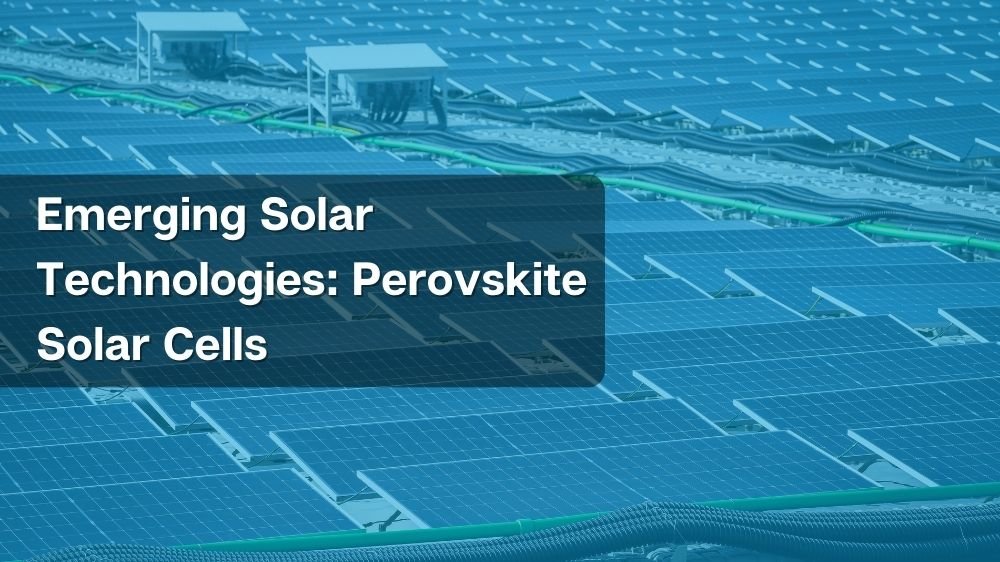Introduction
Solar energy has gained immense popularity over the years as a clean and sustainable source of power. Traditional silicon-based solar cells have dominated the market, but they come with certain limitations such as high production costs and efficiency ceilings. This has paved the way for the emergence of innovative solar technologies, with Perovskite Solar Cells being a front-runner. In this blog, we will delve into the world of Perovskite Solar Cells, exploring their potential, advantages, and challenges.
What Are Perovskite Solar Cells?
Perovskite solar cells are a type of thin-film photovoltaic technology that uses materials with a perovskite crystal structure to convert sunlight into electricity. These materials are typically made from a mix of organic and inorganic components, such as methyl ammonium lead iodide. The unique crystal structure of perovskites enables them to absorb a broad spectrum of light efficiently, making them highly promising for solar energy conversion.
Advantages of Perovskite Solar Cells
- High Efficiency
One of the most significant advantages of perovskite solar cells is their impressive energy conversion efficiency. They have quickly surpassed many other solar technologies, including traditional silicon-based cells. Perovskite cells can achieve efficiencies exceeding 25%, rivalling the best silicon cells on the market.
- Low Production Costs
Perovskite solar cells can be manufactured using low-cost methods, including solution processing techniques like spin-coating and inkjet printing. This makes them a cost-effective alternative to traditional solar panels, potentially lowering the overall cost of solar energy.
- Flexibility and Versatility
Perovskite materials can be engineered to be flexible and lightweight, allowing for various applications beyond standard rooftop installations. They can be integrated into building materials, clothing, or even portable devices, expanding the possibilities for solar energy harvesting.
- Fast Energy Payback
Due to their high efficiency and low production energy requirements, perovskite solar cells offer a fast energy payback period. This means that the energy generated during their operational lifespan quickly surpasses the energy used in their production.
Challenges and Limitations
While perovskite solar cells hold immense promise, they are not without their challenges:
- Stability Issues
Perovskite materials are sensitive to moisture and oxygen, which can lead to degradation over time. Researchers are actively working on improving the stability of these cells to ensure a longer lifespan.
- Toxicity Concerns
Some early formulations of perovskite materials contained toxic lead. Although lead-free alternatives have been developed, addressing environmental concerns remains a priority.
- Scalability and Commercialization
Scaling up the production of perovskite solar cells for mass adoption presents manufacturing challenges. Ensuring consistent quality and reliability at scale is a hurdle that needs to be overcome for commercial viability.
Future Prospects
Perovskite solar cells are undoubtedly one of the most exciting developments in renewable energy technology. They have the potential to revolutionize the solar industry by offering higher efficiency, lower costs, and greater versatility. With ongoing research and development, many of the current limitations are expected to be overcome, paving the way for widespread adoption.
In the near future, we can expect to see perovskite solar cells integrated into a variety of applications, from portable electronics to large-scale solar farms. Their flexibility, efficiency, and cost-effectiveness make them a promising contender in the quest for a sustainable and clean energy future.
Conclusion
Perovskite solar cells are a shining example of how innovation can drive the renewable energy sector forward. With their high efficiency, low production costs, and adaptability, they offer a compelling alternative to traditional silicon-based solar cells. While challenges remain, ongoing research and development efforts are poised to address these issues, making perovskite solar cells a technology to watch in the coming years. As we continue to seek cleaner and more sustainable energy sources, perovskite solar cells are undoubtedly a key player in the transition to a greener future.


